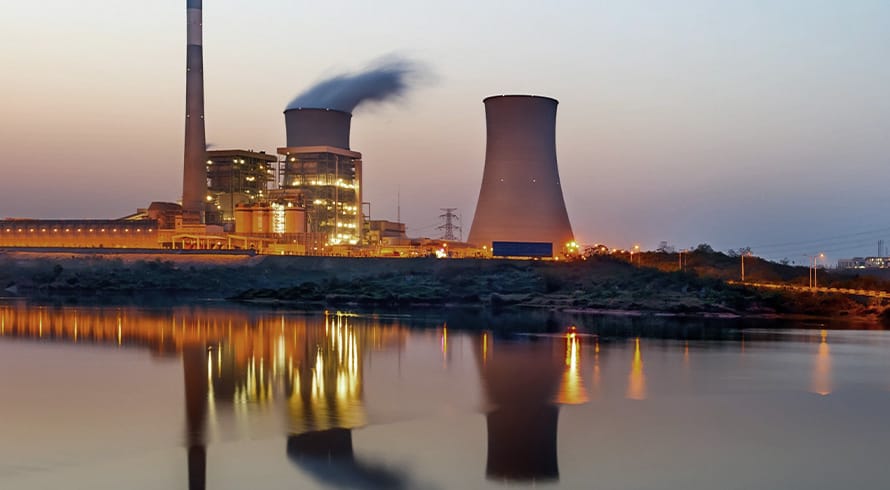The Deadly Air Case: How the High Court confirmed the right to a healthy environment
At a glance
- The Highveld priority area (HPA) in South Africa, known for its poor air quality due to coal-fired power stations and coal mining operations, was declared a priority area in 2007.
- Environmental interest group groundWork filed a lawsuit in 2019, arguing that the poor air quality breached the right to a healthy environment guaranteed by section 24(a) of the Bill of Rights.
- Judge Collis ruled that the poor air quality violated the right to a healthy environment and that the state had an immediate duty to take action. The judge also found that the Minister had a legal duty to implement and enforce the HPA air quality management plan (AQMP) and directed the Minister to prescribe regulations for the HPA AQMP within 12 months.
The Highveld priority area (HPA), which spans parts of Gauteng and Mpumalanga, was declared a priority area by the former Minister of Environmental Affairs (DEA Minister) in 2007. The HPA is synonymous with poor air quality as it is the home to 12 coal-fired power stations, a coal-to-liquid fuels refinery, and large-scale coal-mining operations, which cumulatively have contributed to particularly poor and dangerous air quality in the region.
The HPA has been the focus of environmental interest group groundWork, particularly since 2017 when the organisation began engaging with the then DEA Minister regarding the shortcomings and implementation of the HPA AQMP, including the failure to realise the interventions contained therein and the failure to develop regulations for the implementation of the HPA AQMP. In the absence of any progress, groundWork, together with community organisation Vukani Environmental Justice Alliance Movement in Action (the appplicants), launched legal action in June 2019, with the judgment only recently being handed down in Trustees for the Time Being of Groundwork Trust and One Other v The Minister of Environmental Affairs and Others in the Gauteng Division of the High Court on 18 March 2022.
Right to a healthy environment
The applicants sought a declaration on whether section 24(a) of the Bill of Rights, which establishes the right to a healthy environment, was breached as a result of the poor air quality in this area and if it was breached, whether that right is immediately or progressively realisable by the state. The applicants also requested the court to declare whether the current Minister of Forestry, Fisheries and Environment (Minister) has a legal duty to prescribe regulations under section 20 of NEMAQA to implement and enforce the HPA AQMP. The HPA AQMP, which was promulgated in 2009 and is outdated, lists certain goals to be achieved in order to address air pollution and to improve the quality of ambient air in the HPA, none of which have been achieved.
Judge Collis held that the poor air quality in the HPA is in breach of section 24(a) and that this right should, like the right to a basic education, be immediately realisable. This means that the state has a duty to take steps to make it possible for the public to realise this right here and now (as put forth by the applicants’ counsel, section 24(a) should be interpreted as an unqualified “here and now” right). This interpretation of the right should be lauded as it not only clarifies the duty on the state regarding this environmental right, but places pressure on the state to take action to combat poor air quality in South Africa.
In regard to the obligations of the Minister, Collis declared that the Minister has a legal duty in terms of section 20 of NEMAQA, read together with section 7(2) of the Bill of Rights (which imposes a duty on the state to “respect, protect, promote and fulfil the rights in the Bill of Rights”) to promulgate regulations to implement the HPA AQMP and that her failure to do so amounted to an unreasonable delay. As such, Judge Collis directed the Minister to, within 12 months of the order, prescribe regulations to implement and enforce the HPA AQMP. The Judge directed the Minister to pay heed to 11 explicit considerations (AQMP Considerations) when preparing the HPA implementation regulations, which include the need:
- to give legal effect to the HPA AQMP goals, coupled with appropriate penalties for non-compliance;
- for enhanced monitoring and reporting of atmospheric emissions in the HPA, and the regular review of the HPA AQMP;
- for all relevant national departments, municipalities, provincial departments and Members of the Executive Council to participate in the HPA process and co-operate in the implementation and enforcement of the HPA AQMP; and
- to address the postponement and/or suspension of compliance with minimum emissions standards in the priority area, which emitters were required to comply with by April 2020.
Key parallel developments
The ramifications of the judgment are impacted by two key developments. The first is that on 11 February 2022, just over a month before the judgment was handed down, the Minister published the Proposed Regulations for Implementing and Enforcing Priority Area Air Quality Management Plans in terms of section 20 of NEMAQA (Proposed Regulations) for comment. The Proposed Regulations (which are discussed in detail in our alert that is accessible [here]), are envisioned to apply to AQMPs broadly and are therefore not specifically catered to certain priority areas such as the HPA. The Proposed Regulations provide that “stakeholders”, which range from mining operations to national Government, must implement emission reduction interventions assigned to them within the timeframes set out in the AQMP applicable to their jurisdiction. These interventions include the submission of an emission reduction and management plan that aims to minimise, prevent and manage their emissions.
Another recent development is the Minister’s decision to seek leave to appeal the judgment, which was announced on 11 April 2022. The appeal relates primarily to the aspects of the judgment regarding the interpretation of section 20 of NEMAQA, specifically the court’s finding that the Minister is not merely vested with a discretion to prescribe regulations but is under a duty to do so. In her appeal the Minister argues that a “proper interpretation” of section 20 has wider significance as there are several statutes within the environmental sphere, and for which the Minister is responsible, that contain similarly worded regulation-making powers, and therefore clarity on the correct interpretation is necessary. The Minister maintains that the intention of the appeal is not to delay the drafting of the Proposed Regulations, which will continue in parallel.
Aside from these developments, the judgment in itself is significant for advancing environmental rights and contributing to South Africa’s jurisprudence on environmental law. The court’s decision on appeal will offer further clarity as to whether the state has a duty to promulgate legislation such as the Proposed Regulations. It remains to be seen whether the Proposed Regulations will be revised to align with the judgment’s order, and the AQMP Considerations in particular, considering the Minister’s submissions in the appeal. However, given that the Minister did not dispute the court’s finding that the constitutional right to a healthy environment had been breached, this acquiescence will hopefully impact the drafting and manner of enforcement of the Proposed Regulations in a positive manner.
Ultimately, when the Proposed Regulations are promulgated, regardless of the outcome of the appeal, they will bolster South Africa’s atmospheric emission legislative framework for the betterment of air quality for all, but particularly those living in priority areas such as the HPA.
The information and material published on this website is provided for general purposes only and does not constitute legal advice. We make every effort to ensure that the content is updated regularly and to offer the most current and accurate information. Please consult one of our lawyers on any specific legal problem or matter. We accept no responsibility for any loss or damage, whether direct or consequential, which may arise from reliance on the information contained in these pages. Please refer to our full terms and conditions. Copyright © 2026 Cliffe Dekker Hofmeyr. All rights reserved. For permission to reproduce an article or publication, please contact us cliffedekkerhofmeyr@cdhlegal.com.
Subscribe
We support our clients’ strategic and operational needs by offering innovative, integrated and high quality thought leadership. To stay up to date on the latest legal developments that may potentially impact your business, subscribe to our alerts, seminar and webinar invitations.
Subscribe




